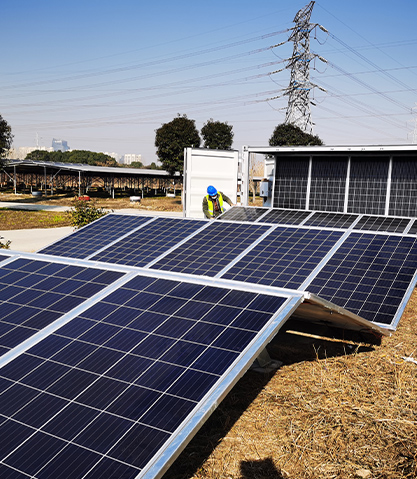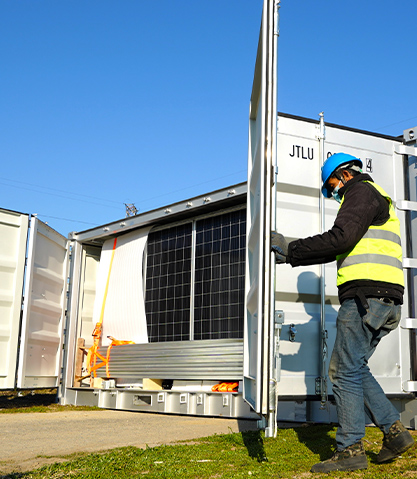In the era of renewable energy innovation, movable solar power plants are emerging as a versatile solution for clean electricity generation in remote, temporary, or rapidly changing environments. Unlike traditional solar installations, which are fixed and infrastructure-dependent, movable systems offer portability, scalability, and speed of deployment — making them valuable assets in construction sites, disaster relief zones, military operations, and off-grid rural areas.
Content
What Is a Movable Solar Power Plant?
A movable solar power plant, also known as a mobile solar power system or portable photovoltaic station, is a pre-engineered, transportable setup designed to generate solar electricity in temporary or off-grid locations. These systems are typically mounted on trailers, shipping containers, skids, or foldable platforms, allowing them to be quickly relocated and deployed without requiring permanent installation.
Unlike rooftop or ground-mounted solar arrays, movable systems are modular and self-contained — often integrating solar panels, battery storage, inverters, and control units within a single mobile unit. Some models also include backup generators or hybrid energy integration with wind or diesel systems for enhanced reliability.

Key Components of a Movable Solar Power Plant
A complete movable solar power system includes the following essential elements:
1. Photovoltaic (PV) Modules
These are the solar panels that capture sunlight and convert it into direct current (DC) electricity. High-efficiency monocrystalline or polycrystalline panels are typically used to maximize energy output in limited space.
2. Mounting Structure or Folding Frame
To enable portability, panels are often installed on adjustable racks, retractable frames, or foldable wings that can be expanded during use and packed compactly for transport.
3. Battery Energy Storage System (BESS)
Rechargeable lithium-ion or lead-acid batteries store excess energy generated during daylight hours. This enables round-the-clock power supply and supports applications in areas without grid access.
4. Inverter
The inverter converts DC electricity produced by the solar panels into alternating current (AC), which is compatible with standard electrical equipment and appliances.
5. Control and Monitoring System
A centralized controller manages power distribution, tracks performance, and ensures system stability. Smart monitoring may be done via apps or cloud-based dashboards.
6. Mobility Platform
Depending on the model, the system may be built on a trailer, container, flatbed, or platform with wheels, enabling easy towing or shipping via truck, train, or even helicopter.
How Do Movable Solar Power Plants Work?
The operation of a movable solar power plant follows the same core principles as a traditional solar installation, but with added mobility and flexibility.
1.Deployment: The unit is transported to the desired location and unfolded or expanded. Setup typically takes a few hours to one day, depending on system size.
2.Sunlight Capture: Solar panels collect sunlight and convert it into DC electricity.
3.Power Conversion: The inverter transforms DC into AC power.
4.Usage and Storage: Electricity powers connected devices or is stored in the battery for later use.
5.Monitoring: Real-time performance data is monitored for maintenance, energy forecasting, and fault detection.
6.Relocation: When the project ends or the site changes, the system is packed and moved to a new location.
Some systems are hybridized, combining solar with wind turbines, diesel generators, or hydrogen fuel cells to enhance reliability in harsh or variable conditions.
Applications of Movable Solar Power Plants
Movable solar power systems are highly adaptable and can be used in a wide range of scenarios:
1. Disaster Response and Emergency Relief
In the aftermath of natural disasters like earthquakes or hurricanes, power infrastructure is often destroyed. Movable solar plants can provide immediate electricity for hospitals, shelters, and communication centers.
2. Military and Defense Operations
Defense forces operating in remote or hostile areas rely on portable energy solutions that reduce fuel dependency and logistical complexity.
3. Construction and Mining Sites
Temporary worksites in off-grid locations need reliable power for tools, lighting, and communication. Movable solar offers a cleaner, quieter alternative to diesel generators.
4. Remote Villages and Off-Grid Communities
In regions where grid extension is not feasible, mobile solar plants can deliver decentralized, renewable power for homes, schools, and clinics.
5. Events and Festivals
Outdoor events, concerts, or mobile exhibitions require temporary power. Solar systems offer an eco-friendly solution without noisy generators.
6. Telecommunication Towers
Movable units can power cellular towers and satellite stations in isolated regions, reducing reliance on conventional fuel.
Advantages of Movable Solar Power Plants
Portability: Easily transported and redeployed as needed.
Rapid Deployment: Minimal setup time compared to building fixed infrastructure.
Cost Efficiency: Reduces fuel costs and long-term maintenance compared to diesel-based systems.
Eco-Friendly: Generates clean energy with zero emissions and minimal noise.
Scalability: Modular design allows expansion or downsizing based on energy needs.
Versatility: Suitable for both temporary and semi-permanent installations.
Challenges and Considerations
Despite their benefits, movable solar power systems also come with limitations:
Initial Investment: The upfront cost of a movable system may be higher than fixed arrays or diesel generators.
Space Constraints: Mobile platforms limit the number of panels and storage, affecting total capacity.
Weather Dependence: Performance can drop in areas with limited sun exposure.
Security: As mobile units are placed in open or remote areas, theft and vandalism may be a concern.
However, continuous innovations in panel efficiency, lightweight materials, and compact battery technologies are gradually overcoming these barriers.
The Future of Mobile Solar Solutions
With the global push for decarbonization, energy resilience, and distributed power, the market for movable solar power plants is growing. Future advancements may include:
AI-based power optimization
Self-deploying robotic systems
Integration with hydrogen fuel cells
Energy-as-a-service leasing models
Moreover, as containerized and trailer-mounted systems become more standardized, production costs are expected to decrease, making this solution accessible to developing regions and humanitarian organizations.
Conclusion
Movable solar power plants represent a transformative step in the evolution of renewable energy — combining the sustainability of solar with the flexibility of mobility. By offering off-grid, portable electricity in diverse environments, these systems meet the growing need for clean, decentralized power in a rapidly changing world.
Whether it's powering a rural clinic, supporting emergency recovery, or fueling innovation in mobile infrastructure, movable solar technology is proving that renewable energy doesn’t have to be tied to one place — it can go wherever it’s needed.

 English
English 中文简体
中文简体 عربى
عربى



